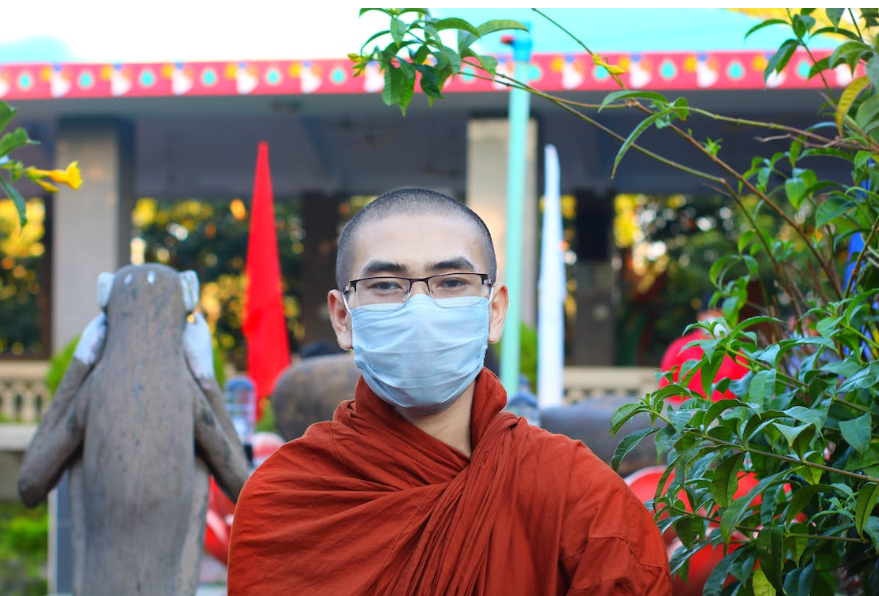Who Practices Mindfulness
Who Practices Mindfulness? Is it Right for me? These people manage to stay calm amidst the overwhelming churn of life. Here’s how they do it.

Selfpause Affirmation App
Download the app to get 1,000’s of affirmation meditations and everything you need to write, record and listen to your own.
This article discusses the question of who practices mindfulness. Various groups have their own perspectives on this topic, including Buddhists, Christians, non-Christians, and young adults. It also discusses the implications for social identity and the uptake of the practice. The findings suggest that mindfulness practices are predominantly practiced by women and may be associated with a feminism or liberal ideology. Men, on the other hand, are often a less welcome presence in such communities.
Buddhism

Mindfulness is a practice in which we become aware of everything that is happening in our mind. The Buddha called it the “road to enlightenment” and it has been followed by many Buddhists throughout the centuries. It is a practice which has many benefits, but it’s not something that can be practiced by everyone.
Mindfulness has a strong emphasis on ethical virtues, and Buddhist practitioners strive to practice these virtues through meditation. Yet, some Buddhists have criticized the scientific rendering of the concept as misappropriating Buddhist practices. The scientific definition of mindfulness, formulated by Jon Kabat-Zinn, emphasizes paying attention in a specific way, without judging.
While there’s no precise operational definition of mindfulness in psychology, most people understand the term as being present-oriented, non-conceptual, and non-judgmental. Mindfulness practice has roots in other traditions, including Hinduism, and is also part of a wide range of modern practices. In fact, mindfulness originated in India, around 400-500 B.C.E., when Siddhartha Gautama – later known as Buddha – was born and raised. His upbringing was heavily influenced by Hinduism, which was considered one of the oldest extant religions in the world.
Some of the most influential practitioners of mindfulness in the modern day are Jon Kabat-Zinn and Thich Nhat Hanh. Jon Kabat-Zinn was introduced to Buddhism by a Zen missionary at MIT, and he studied meditation at the Providence Zen Center and the Insight Meditation Center. He took inspiration from many traditions in his practice and developed the Mindfulness-Based Stress Reduction course.
Although the technique is not specific to Buddhism, it is still beneficial to everyone. Some Buddhist traditions include visualization practices, which require training and study. In addition, certain techniques of mindfulness meditation are specific to Buddhist teachings, like the Tibetan version. If you’re interested in learning the Tibetan version of the practice, it’s important to seek the guidance of a trained teacher.
Mindfulness is an essential component of Buddhist meditation. The Buddha taught that suffering stems from ignorance and that clearing one’s mind is the path to enlightenment. To do this, one needs to acquire insight – a knowledge that is beyond intellectual cognition. Only through experience can insight be gained. This is why mindfulness is so useful.
Non-Christian/non-religious traditions

Buddhism is perhaps the most widely practiced form of mindfulness, putting its emphasis on the practice of mindful awareness. The Buddhist tradition has played a key role in the recent growth of mindfulness as a secular practice, but it is important to note that mindfulness practices are not intrinsically Buddhist. Buddhists practice meditation, fasting, and prayer, but secular people are not bound by these traditions.
Non-Christian/non-religion traditions of mindfulness are not as enlightened as Christianity, but Christians should not feel scandalized by them. In fact, Christianity has long taught the need for self-knowledge to know God, and this practice helps Christians empty themselves of the self and open up to the Divine. As long as a Christian is certain of the Truth Itself, they can affirm the practice of mindfulness without fear.
Christian schools bear a great responsibility to provide their students with a positive account of reality. But it also has a great risk of impoverishing the Christian life. It could weaken the bond of communion and stifle the awareness of God. As a consequence, they should not offer mindfulness as a solution in Christian schools.
Non-Christian/non-religion traditions of mindfulness and yoga often neglect religious aspects of their practices. In North America, for example, public schools largely promote a Christian understanding of religion, and in the twentieth century courts have ruled that religious practices such as yoga and meditation should not be taught in schools. Despite this, yoga and mindfulness meditation are closely linked to Buddhist and Hindu metaphysical spirituality. It is important to understand these traditions in order to understand the work of religions in larger contexts.
While mindfulness is not a religion, it is widely practiced in society and has proven to be helpful for many. It is a collection of wellbeing techniques, and has long been studied. The benefits of these techniques have led some to move these practices into the secular realm. In fact, many religions have incorporated mindfulness practices into their spiritual practices, including some forms of Buddhism.
Western societies

While the practice of mindfulness has deep roots in Eastern philosophies, it is increasingly popular in Western societies. This trend is motivated by the societal needs of modern Western societies. However, this growing popularity of mindfulness practices has created an unexpectedly disturbing culture. This article explores some of the reasons why Western societies have taken up mindfulness.
Essentially, mindfulness is about paying attention to the present moment and allowing nothing to occur without conscious awareness. It is a way of approaching life that is geared toward achieving cognitive transformations and gaining wisdom. While mindfulness may be challenging to practice, it can lead to a clearer sense of self. It is also associated with greater self-actualization and higher self-esteem.
Mindfulness has exploded in popularity since the 1960s, and has spread to mainstream culture. It can now be found in books, podcasts, and TV shows. Even doctors are incorporating mindfulness practices into their work. In fact, UCSD plans to offer a course on the practice of mindfulness in its medical school next year.
The practice of mindfulness has roots in Eastern culture. Westerners have adapted Eastern traditions for a Western audience. However, there are significant differences between the two hemispheres. The first rule of Mindfulness is to be aware of your experience. By bringing awareness and acceptance, you can reduce anxiety and depression. Moreover, it can help you prepare for future experiences.
Mindfulness is increasingly becoming popular in the United States. The practice has become an integral part of mental health movements and is starting to gain momentum in Western societies. Many scientists are becoming interested in the concept, and some of them have conducted independent studies. As of 1996, three studies were published in scientific journals. Today, many people are discovering the benefits of meditation and self-awareness.
The traditional meaning of mindfulness is rooted in Buddhism, but Western society has adapted the term in a variety of ways. Westerners are using it to cure stress and manage daily anxiety. The practice of mindfulness can help you stop worrying about the past or the future and focus on the present.
Our Top FAQ's
Mindfulness can be practiced by anyone, regardless of age, gender, or cultural background. It is a skill that can be learned and cultivated by anyone who is interested in developing greater awareness, focus, and presence in their daily life. Mindfulness is often practiced by people seeking to reduce stress, improve their mental and emotional well-being, and enhance their overall quality of life. It is also commonly practiced by healthcare professionals, educators, and other individuals working in helping professions, as a way to improve their ability to work with clients or students in a compassionate and non-judgmental way.
There are many different ways to begin practicing mindfulness, but one common approach is to start with simple mindfulness meditation exercises. These can involve paying attention to your breath, or to other physical sensations in your body, and bringing your awareness back to the present moment whenever your mind wanders. Other mindfulness practices might involve paying attention to your surroundings as you go about your daily activities, or setting aside specific times throughout the day to focus on your present experience. Some people find it helpful to start with short mindfulness sessions and gradually increase the duration as they become more comfortable with the practice.
Mindfulness can be practiced by people of all ages and from all walks of life. However, it has gained particular popularity in recent years as a way to manage stress and improve mental and emotional well-being, and it is often practiced by people who are seeking to improve their overall quality of life. Some research has also suggested that mindfulness may be particularly helpful for individuals experiencing anxiety, depression, or other mental health challenges, as well as for people dealing with chronic physical pain or illness.
There is a growing body of research suggesting that mindfulness practice can have a number of positive effects on mental and physical health. Some studies have found that mindfulness can help reduce stress, improve attention and focus, and increase feelings of well-being and happiness. It may also help individuals to better cope with difficult emotions and improve their relationships with others. At a societal level, mindfulness practice has the potential to contribute to a more compassionate and understanding society, as people become more aware of their own thoughts, feelings, and behaviors and learn to approach others with greater understanding and empathy.
Like any skill, mindfulness takes time and effort to develop, and it is not always easy to sustain a regular practice. Some people may find it difficult to quiet their minds and stay focused on the present moment, and may become discouraged if they feel they are not making progress. It is also important to recognize that mindfulness is not a panacea and may not be helpful for everyone. Some individuals may find that mindfulness practices trigger difficult emotions or memories, and it is important to seek support if this happens. It is also important to be mindful of cultural differences and to approach mindfulness practices with sensitivity and respect.
